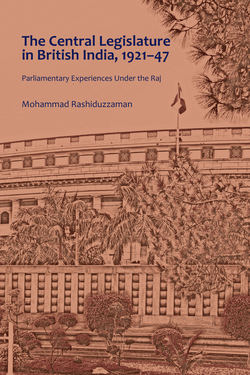Читать книгу The Central Legislature in British India, 192147 - Mohammad Rashiduzzaman - Страница 14
На сайте Литреса книга снята с продажи.
Оглавление| xxv →
PREFACE TO THE FIRST EDITION (1965)
This book attempts to study an important political institution of British India, namely the Central Legislature which was introduced under the Montagu-Chelmsford Reforms in 1921 as an experiment in representative institutions but continued to work till the transfer of power in 1947. The Central Legislature was not a full-fledged Parliament though it had wider powers and privileges compared to the pre-1921 legislative councils. Its status could best be described as a quasi-Parliament getting ready to assume the position of a sovereign Parliament. It was a peculiar institution with a majority of elected representatives faced by an immovable Executive which was legally responsible to the Whitehall. Yet the Executive was compelled under the pressure of elected representatives to be responsive and in some measure responsible to the Legislature. Even if they would have despised the hostile Assembly in private, the members of the bureaucracy sat and listened to the criticism and answered them often showing great parliamentary skill. The Government had to use persuasive and co-operative techniques to obtain support of the elected representatives.
The nationalist parties outside condemned the Central Legislature as an utterly inadequate institution; yet they never permanently ignored it. They wanted to get inside the Legislature firstly to ventilate political grievances ← xxv | xxvi → and secondly to influence the course of administration. In fact, the Central Legislature was the only all-India parliamentary forum where diversified forces came to play. It was the only institution which imparted parliamentary experience to many politicians at an all-India level who later came to occupy many important positions in the responsible governments of independent India and Pakistan. Viewed in this context, the study of the Central Legislature is fascinating for the students of political institution and the constitutional history of the sub-continent.
The present study emphasizes on the actual working of the Central Legislature from 1921 to 1947 in its various spheres. The subject matter of this book has been arranged in eleven chapters. Chapters I to III provide introductory background. Chapter II has been specially designed to indicate the place of the Legislature against the political background. Chapter IV has indicated the constitutional powers, privileges and procedures of the Legislature. Chapters V to VIII and X have made a detailed analysis of the actual working of the Central Legislature in its important spheres. Chapter IX has discussed at length the political grievances ventilated in the Central Legislature and Chapter XI has touched upon certain concluding remarks.
This book has been based on my thesis approved for the degree of Doctor of Philosophy by the University of Durham in July, 1964. The main sources for it have been the official reports of the debates of the Legislative Assembly and the Council of State and numerous other relevant official and non-official records and documents published during the period under review. The other significant sources have been some of the Indian news papers and periodicals available in London. As it will be seen in the following pages, the main emphasis of this work has been on the working of the Central Legislature during the inter-war period; there are relatively fewer references to the period from 1940 to 1947. This is because the main developments in the practices and procedures in the Legislature took place during the inter-war years and the later period was more or less uneventful. By 1940, the Central Legislature as it stood was out of date and the more important political developments outside overshadowed it.
It is my pleasant duty to make a few grateful acknowledgements. I express my sincere gratitude to Professor W. H. Morris-Jones, University of Durham, England under whose scholarly and sympathetic guidance I had the privilege of doing this work. I would like to thank University of Dacca for granting me study leave for doing this research leading to a Ph.D. degree. I am also grateful to the Commonwealth Scholarship and Fellowship Commission in the U.K. ← xxvi | xxvii → whose financial grants enabled me to live in England with my family. I found it necessary to interview a few ex-members of the Central Legislature who are still alive in Britain and I am grateful to them for kindly sparing their time to talk to me (the names have been added to the Bibliography). I would like to thank particularly Sir Jeremy Raisman, the former Finance Member, Viceroy’s Executive Council who kindly read Chapter VIII and made useful suggestions. I must also thank the staffs of the India Office Library at the Commonwealth Relations Office, the British Museum, the India House Library and the London School of Economics and Political Science for their kind cooperation and help.
I am indebted to Mr. James S. Chaffey and Mr. David R. Bradley and T. J. Maughan of the British Council, Dacca who rendered valuable suggestions at the time of publication of this work. I am thankful to Professor G. W. Choudhury, Head of the Department of Political Science, University of Dacca for his encouragement in publishing this book. I am most grateful to Mr. Enamul Karim, Lecturer in English and Dr. M. Ali, Lecturer in History, University of Dacca who helped me immensely in going through the proofs and made useful suggestions. I take this opportunity of thanking my other colleagues in the University of Dacca who helped me in various ways towards its publication.
In spite of my best efforts, some typographical errors have crept in for which I crave the indulgence of my readers.
M. Rashiduzzarnan
Dacca,
August 2, 1965.
